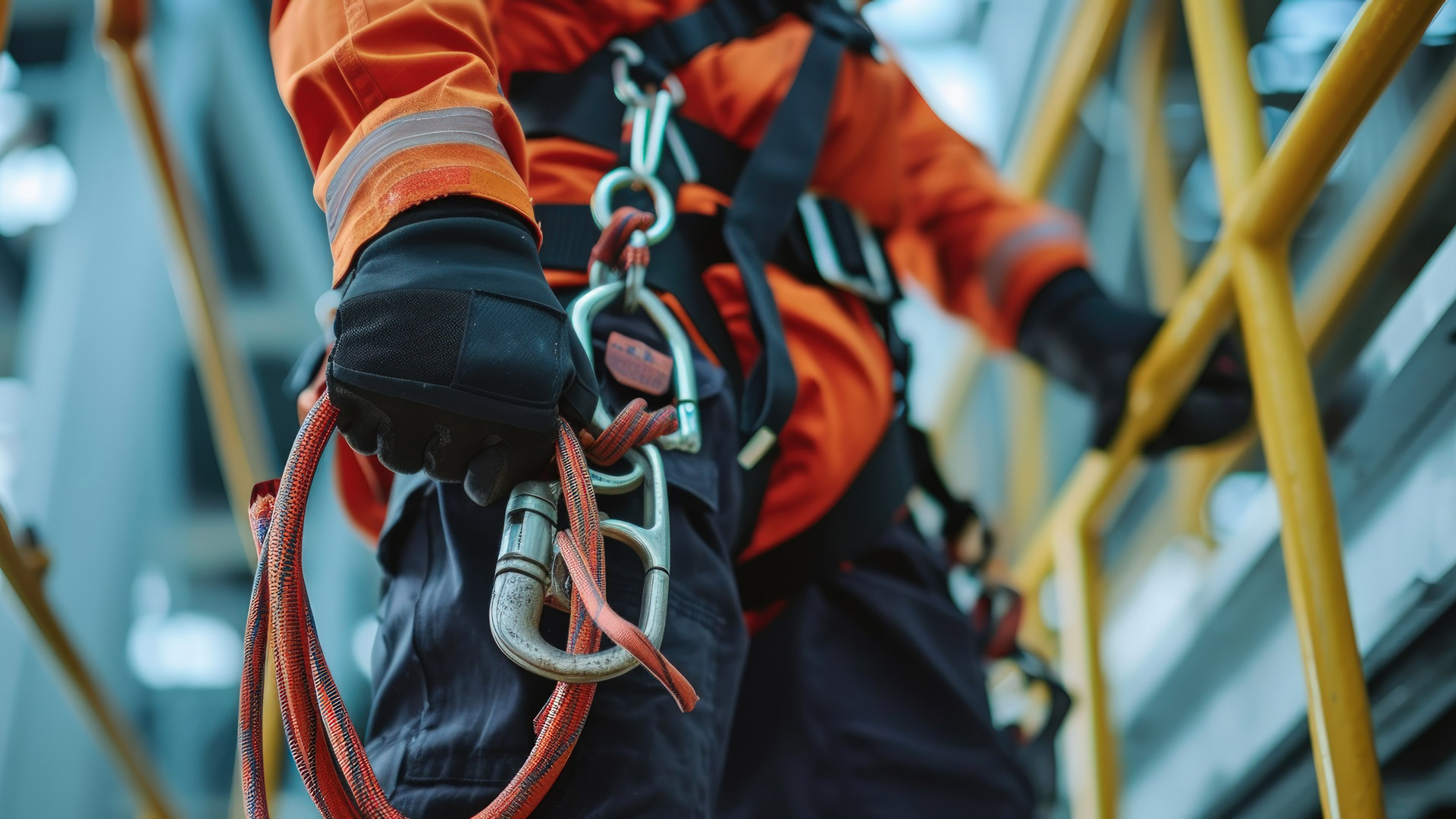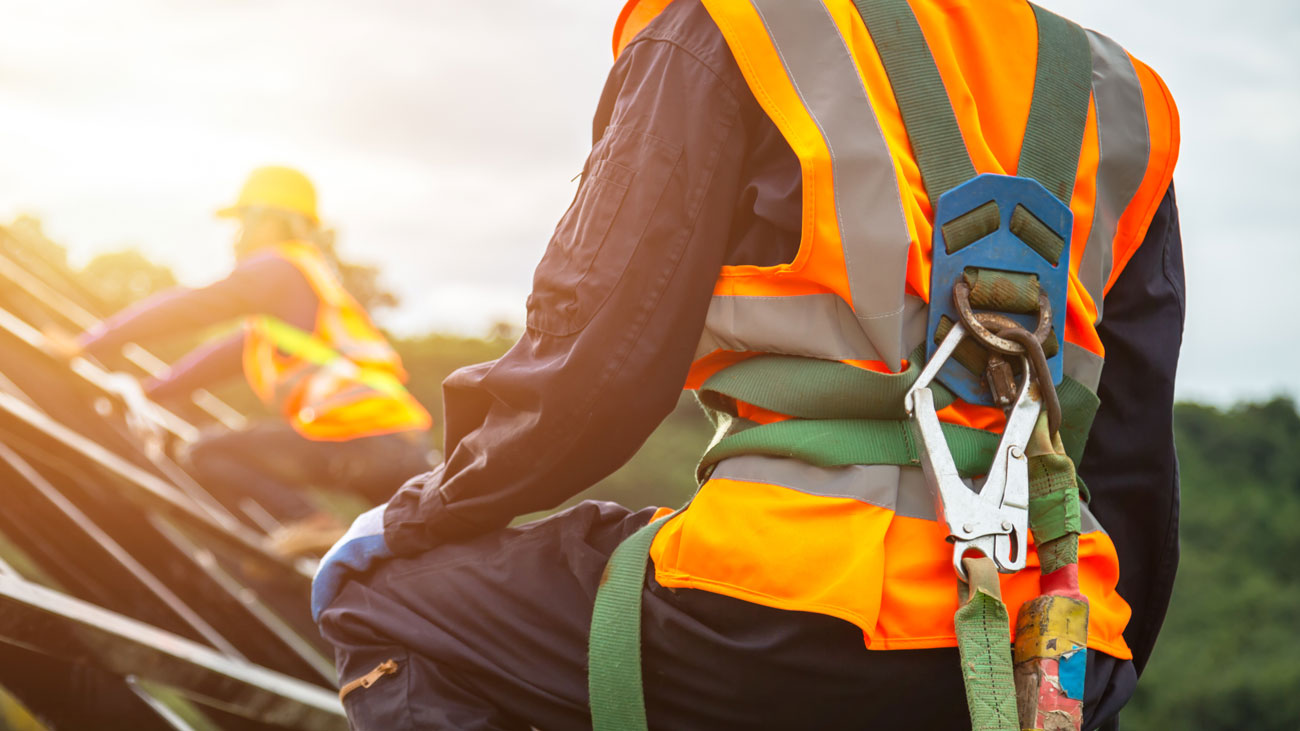Employers have been urged to consider the dangers of working at height in a week in which two companies have been sentenced for falls from skylights.
A Wakefield roofing company was fined £20,000 and its sole director given a suspended prison sentence after a man was killed when he fell 12 metres through a skylight, whilst a Hertfordshire company has been fined £96,000 for a similar incident in which a worker suffered serious head injuries.
Jonathan May, 39, who was a subcontractor for Davis Industrial Roofing Limited, was working on a storm-damaged warehouse roof at F&G Commercials Limited, with two others on 18 December 2016, when he fell.
The work involved the replacement of more than 300 skylights on a fragile asbestos cement roof. The skylights had been damaged in a hailstorm.
An investigation by the HSE found Davis Industrial Roofing Limited had failed to provide an appropriate risk assessment, method statement, and suitable and sufficient fall protection measures for the roof work to be carried out safely.
The investigation found even though reasonably practicable precautions were available, poor planning had resulted in a risk assessment and method statement that was not suitable and sufficient. The work was poorly supervised and carried out unsafely.
Melvyn Davis, the sole director of the company, who had drawn up the risk assessment and method statement and had regularly visited the site to monitor progress, had failed to provide suitable and sufficient fall protection measures and consented to the use of an unsafe system of work. This constituted a personal neglect for safety during the roof work.
Davis pleaded guilty to breaching Section 37(1) of the Health and Safety at Work etc. Act 1974 and was sentenced to eight weeks’ imprisonment suspended for 12 months and ordered to do 15 days of rehabilitation activity.
Davis Industrial Roofing Limited pleaded guilty to breaching Section 2(1) of the Health and Safety at Work etc. Act 1974 and was fined £20,000 and ordered to pay costs of £12,557.
Speaking after the hearing, HSE Inspector Chris Gallagher said:
“This incident could so easily have been avoided by simply carrying out correct control measures and safe working practices. Companies and directors should be aware that HSE will not hesitate to take appropriate enforcement action against those that fall below the required standards.”
Meanwhile, a Hertfordshire construction company has been fined after a worker fell through a skylight while working on a six-storey house. The man fell over three metres and received serious head injuries that led to him being in a coma for six weeks.
MH Costa Construction Limited had been completely renovating a property, which included building a basement and an extension. On 30 November 2018, the worker was working on the extension’s flat roof when he fell through an opening created for the installation of a skylight. The opening was covered with loose planks and work was in progress immediately by the opening.
The HSE’s investigation found it would have only taken a small movement to dislodge the planks. The worker either fell or stepped onto a plank, which then tipped, causing him to fall to the basement below.
The company’s risk assessment records did not consider how to prevent falls through the opening. Additionally, there was no scaffolding or other measures to prevent falls off the sides of the flat roof.
The HSE also found other areas where workers could fall, as well as issues relating to manual handling, trip hazards, hazardous wood dust and the storage of flammable materials. There was also no evidence the injured worker had been provided with any formal health and safety related training.
MH Costa Construction Limited pleaded guilty to a breach of Regulation 13 (1) of the Construction (Design and Management) Regulations 2015. It was fined £96,000 and ordered to pay £18,965.66 in costs.
HSE inspector, Andrew Verrall-Withers, said:
“It is well known in the construction industry that working on roofs is a high-risk activity. Roofers account for 24% of all workers who are killed in falls from height while at work. It is essential it is carefully planned. The worker suffered serious injuries and may never be able to work again. It is just good fortune he was not killed, but it must have been terrible for his family waiting for those six weeks when he was in a coma. The company ignored good opportunities to review and improve their arrangements before this tragic incident. HSE had served Notification of Contraventions on the company at two other sites during the previous six months, including highlighting unsafe working at height. At one site in Fulham a visiting health and safety advisor provided the company with audit reports which raised edge protection issues as needing immediate attention.”
The law on work at height requires that you take account of your risk assessment in organising and planning work and identifying the precautions required. Your objective is to make sure work at height is properly planned, supervised and carried out in a safe manner.
The following approach should be adopted for working at height:
- Avoid work at height where it reasonably practicable to do so, e.g. by assembly at ground level.
- Prevent any person falling a distance liable to cause personal injury, e.g. by using a scaffold platform with guard rails and toe boards.
- Arrest a fall with equipment to minimise the distance and consequences of a fall, e.g. safety nets, where work at height cannot be avoided or the fall prevented.
You may also be interested in
RELATED CONTENT
RELATED COURSES

The Working at height course helps learners understand the dangers associated with working at height and ways to control the risks

Introduction to health and safety gives learners a basic introduction to managing safety in their workplace.

Work at height continues to be the most common cause of fatal injury, according to the HSE’s latest statistics, published on 6 July.

Solar panel company Blue Sun Energy Limited has been sentenced for safety breaches after a self-employed labourer fell through a rooflight.

The Access Industry Forum (AIF), the forum that represents the principal work at height trade associations and federations, is calling for clearer rep...

Latest research commissioned by the Ladder Association has again raised serious concerns that unsafe and potentially dangerous ladders continue to be ...